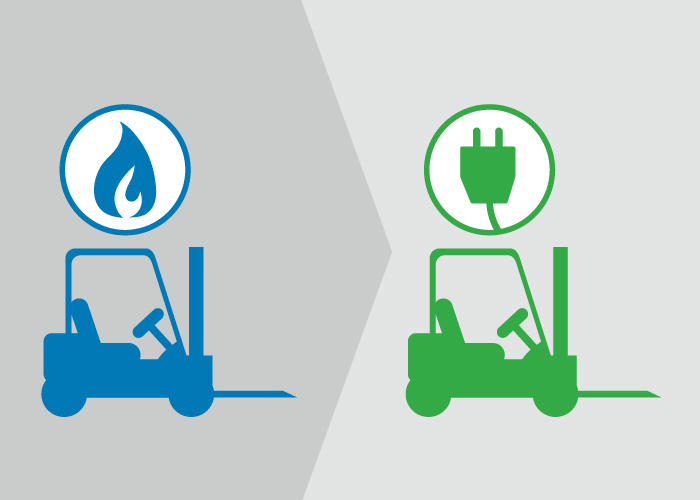We use cookies to make your experience better. To comply with the new e-Privacy directive, we need to ask for your consent to set the cookies. Learn more.
Seamlessly Transitioning to Electric Power for Forklifts

However, nearly every warehouse, big or small, can join the 64 percent of forklift users who have already made the move to battery power. The key is to work with a provider that can get your facility outfitted for electric power without having to shut everything down for installation.
Efficiency Gains from Forklift Battery Handling Equipment
The biggest difference between gas and electric forklifts is that the fuel source for the latter is reusable. That means each battery you buy provides you with 5-7 years worth of power, but it also means you need a comprehensive strategy to change out forklift batteries for charging and maintenance.
Plan to set aside a dedicated space in your warehouse for this. Of course, warehouse space is a valuable commodity, and batteries can be quite large. In order to minimize the footprint of your battery room, you just need to take advantage of vertical space. Multi-tiered battery stands provide the solution.
You will also need to determine what kind of equipment is best for changing out your batteries. If your lift fleet is small to medium-sized, a pallet truck-mounted automatic transfer carriage, such as the BHS Automatic Transfer Carriage (ATC), might fit your needs.
Larger or busier fleets demand multiple battery change-outs per day, and pallet-truck-mounted equipment just won’t be able to keep up. So, larger fleets will require an operator aboard battery extractor that reduces change-out times to the absolute minimum. Operator aboard battery extractors require a clear “track” to move back and forth between the battery racks, so you’ll need to place your battery changing area where there’s sufficient space. BHS offers operator aboard battery extractors that safely navigate up to four tiers of stands.
Smooth Battery Room Installations, Without Productivity Loss
Once you have a plan for a safe and efficient battery room, you still need to build it — preferably without work-loss for a single shift. Project managers at BHS have decades of experience planning and implementing battery room installations in working warehouses. A phased install allows your facility to continue meeting all productivity goals while your battery room is being built; it’s the proverbial building the plane while it’s in the air.
When you make the move from fossil fuels to battery-powered lifts, it’s important not only to think about your warehouse’s current needs and demands, but those of the future. Battery powered lifts will save most every operation cost both day-to-day and in the long run. Just make sure you choose a provider who can not only provide the finest equipment, but can create a strategy that will keep your operation growing in the midst of this valuable transition.
References:
“Batteries and battery charging - 1926.441.” OSHA. Occupational Safety & Health Administration, United States Department of Labor, n.d. Web 11 Apr. 2016.
Faust, Brian. “Electric Forklifts Gain Acceptance, Driven by Sustainability Features.” Foodlogistics. AC Business Media, 2016. Web. 11 Apr. 2016.
“LPG vs. Battery Electric Forklifts.” Aalhysterforklifts. Adaptalift Hyster, 2016. Web. 11 Apr. 2016.
Talvery, John. “Advantages of Electric Forklifts (with a few drawbacks too).” Theforkliftcenter. The Forklift Center, 2013. Web. 11 Apr. 2016.
